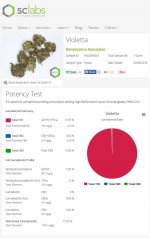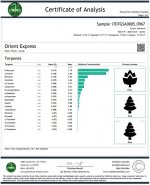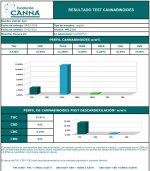Kali China F3 x Panama Goddess F10 cannabinoid analysis
Kali China F3 x Panama Goddess F10 cannabinoid analysis
The Kali China F3 x Panama Goddess F10 hybrids shows an almost pure THC chemotype with moderate/high THC content (14,7 %) and little amounts of CBD, CBG and CBC.
Sample grown and brought to the lab by mayan.
Kali China F3 x Panama Goddess F10 cannabinoid analysis
The Kali China F3 x Panama Goddess F10 hybrids shows an almost pure THC chemotype with moderate/high THC content (14,7 %) and little amounts of CBD, CBG and CBC.
Sample grown and brought to the lab by mayan.

















































